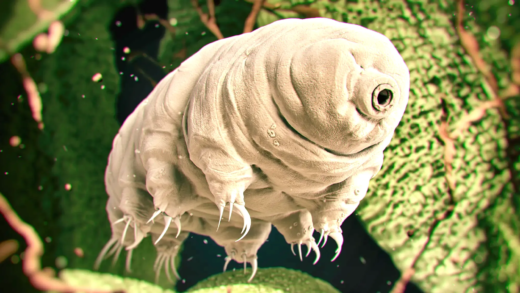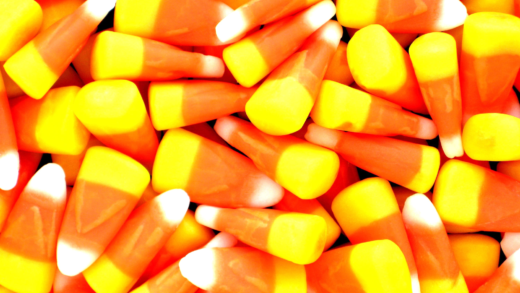Tertiary colors are formed by mixing primary and secondary colors, enriching design across various industries. They enhance graphic design by creating depth, evoke emotions in fashion, and transform home decor. Current trends include bold combinations and a retro revival of these colors. Personal experiences showcase their versatility and impact in real-world projects. Understanding and utilizing tertiary colors can elevate design outcomes and connect with audiences effectively.
What Are Tertiary Colors?
Tertiary colors are a crucial part of the color wheel, created by mixing primary and secondary colors. They sit between these categories, forming a bridge that enriches our understanding of color theory. In essence, tertiary colors combine the vibrancy of primary colors with the subtlety of secondary colors, resulting in hues like red-orange and blue-green.
Understanding tertiary colors involves recognizing how they fit into the broader spectrum. The primary colors (red, blue, yellow) mix to create secondary colors (green, orange, purple). By blending a primary color with an adjacent secondary color, we generate tertiary colors. For instance, mixing yellow (a primary color) with orange (a secondary color) produces yellow-orange, a beautiful tertiary hue.
How Tertiary Colors Are Created
Creating tertiary colors is an exciting process that enhances our color palette. To create these unique shades, you mix a primary color with a secondary color. This method not only broadens your artistic options but also adds depth to your designs.
Here’s a simple breakdown of how it works:
- Red + Orange = Red-Orange
- Yellow + Orange = Yellow-Orange
- Yellow + Green = Yellow-Green
- Blue + Green = Blue-Green
- Blue + Purple = Blue-Purple
- Red + Purple = Red-Purple
This mixing process allows artists and designers to create a variety of hues that can evoke different emotions and atmospheres. Understanding how to create these colors is essential for effective design.
Examples of Tertiary Colors
Common tertiary colors offer a glimpse into how versatile this category can be. Here are some popular examples:
- Red-Orange: A vibrant color often used in branding to convey energy.
- Yellow-Orange: Bright and cheerful, this color is perfect for summer themes.
- Yellow-Green: A fresh color reminiscent of spring and nature.
- Blue-Green: Often associated with tranquility, it’s a favorite in interior design.
- Blue-Purple: This shade can add a touch of sophistication to any palette.
- Red-Purple: A bold choice that can create dramatic contrasts.
These examples illustrate how tertiary colors can enhance visual interest and depth in various applications.
The Importance of Tertiary Colors in Graphic Design
Tertiary colors play a vital role in graphic design, significantly enhancing visual appeal. Their unique combinations can create harmony or contrast, depending on the designer’s intent. Utilizing these colors allows for more nuanced designs that capture attention.
In graphic design, tertiary colors can:
- Enhance Brand Identity: Brands often use specific color combinations to convey their message and values.
- Create Depth: Tertiary colors can add layers to designs, making them more dynamic.
- Set the Mood: Different color combinations evoke various emotions, influencing how viewers perceive the design.
In summary, understanding and applying tertiary colors in graphic design is crucial for creating visually compelling and emotionally resonant work.
Using Tertiary Colors in Fashion
Tertiary colors are pivotal in fashion design, adding depth and uniqueness to clothing collections. Fashion designers frequently utilize these colors to create striking contrasts and harmonious palettes that resonate with trends and personal styles.
For instance, consider the use of blue-green in summer collections. This color evokes a sense of calm and freshness, perfect for beachwear. On the other hand, red-orange can infuse energy into a fall collection, making garments stand out on the runway.
Here are some ways tertiary colors influence fashion:
- Seasonal Trends: Designers often align tertiary colors with seasonal themes, using yellows and oranges in spring and earthy tones in autumn.
- Color Blocking: Combining tertiary colors with primary and secondary hues creates bold, eye-catching outfits.
- Accessorizing: Tertiary colors are excellent for accessories, such as bags or shoes, adding a pop of color to neutral outfits.
In summary, tertiary colors are essential in fashion, allowing designers to express creativity while enhancing the overall appeal of their collections.
Tertiary Colors in Home Decor
Tertiary colors play a significant role in home decor, impacting the ambiance and aesthetic of living spaces. By incorporating these colors, homeowners can achieve a balanced and inviting environment.
For example, a yellow-green shade can breathe life into a kitchen, while blue-purple hues can create a sophisticated atmosphere in a living room. Here’s how tertiary colors can be effectively used:
- Accent Walls: A bold tertiary color on an accent wall can become a focal point in any room.
- Textiles: Using tertiary colors in cushions, curtains, and rugs can tie a room together, creating a cohesive look.
- Artwork: Incorporating art pieces that feature tertiary colors can enhance the overall decor and add personality.
Ultimately, the strategic use of tertiary colors in home decor can transform spaces, making them more vibrant and inviting.
Creating Color Palettes with Tertiary Colors
Creating color palettes with tertiary colors is crucial for achieving harmonious designs. By skillfully blending these colors with primary and secondary hues, designers can produce visually appealing compositions.
Here are some tips for effectively using tertiary colors in your palettes:
- Start with Neutrals: Use neutral colors as a base to allow tertiary colors to shine without overwhelming the space.
- Choose Complementary Colors: Pair tertiary colors with their complementary hues for striking contrasts that grab attention.
- Consider Proportions: Balance the use of tertiary colors; too much can be overwhelming, while too little can make a palette feel flat.
By following these guidelines, you can create beautiful and functional designs that effectively incorporate tertiary colors.
Cultural Significance of Tertiary Colors
Tertiary colors carry various cultural significances, impacting their use across different societies. Understanding these meanings can enhance the effectiveness of color choices in design.
For instance, in many Asian cultures, colors like yellow-orange symbolize prosperity and happiness. Meanwhile, blue-green can represent tranquility and nature in Western contexts. Here are a few cultural aspects to consider:
- Symbolism: Colors often hold specific meanings in different cultures, influencing design choices.
- Traditions: Certain colors may be preferred for specific occasions, such as weddings or festivals.
- Fashion Trends: Cultural backgrounds can dictate popular color trends in fashion, varying from one region to another.
Recognizing the cultural significance of tertiary colors can lead to more thoughtful and effective design choices, resonating with diverse audiences.
Current Trends in Tertiary Colors
Tertiary colors are shaping trends across various industries, influencing everything from graphic design to fashion. Designers today are increasingly embracing these hues to create unique and engaging visuals. For instance, in graphic design, a blend of tertiary colors can produce eye-catching branding materials that stand out in a crowded market.
In fashion, the resurgence of earthy tones like yellow-green and blue-purple aligns with the growing trend towards sustainability and natural aesthetics. These colors reflect a desire for comfort and connection to nature, often seen in eco-friendly fashion lines. Here are some current trends involving tertiary colors:
- Bold Combinations: Pairing tertiary colors with neutrals is becoming popular, allowing the colors to pop without overwhelming the design.
- Retro Revival: Tertiary colors from the 70s and 80s are making a comeback, bringing nostalgia into modern design.
- Minimalism with a Twist: Simple designs that incorporate tertiary colors add depth and interest while maintaining a clean look.
Staying updated on these trends helps designers and consumers alike make informed choices that resonate with current aesthetics.
Personal Stories and Experiences
Using tertiary colors can lead to unexpected and delightful outcomes in design projects. I remember working on a branding project for a local café. The owner wanted a fresh and inviting atmosphere, so we incorporated yellow-green and red-orange into the logo and interior design. The result was a vibrant space that attracted more customers than ever.
Another memorable experience was when I experimented with tertiary colors in a home decor project. I painted an accent wall in blue-green and paired it with soft neutrals and natural wood accents. The transformation was stunning, creating a calming yet stylish environment that my clients adored.
These personal anecdotes highlight the versatility and impact of tertiary colors in various design contexts, demonstrating their potential to elevate projects and create memorable experiences.
Conclusion
Tertiary colors are vital in design, offering a unique blend of vibrancy and subtlety that enhances visual appeal across various applications. From graphic design to fashion and home decor, understanding how to effectively use these colors can significantly impact aesthetics and functionality. Their cultural significance and current trends further emphasize the importance of integrating tertiary colors into creative projects. By embracing these hues, designers can create engaging, harmonious, and visually stunning results that resonate with audiences. Ultimately, tertiary colors are not just shades on a palette; they are essential tools for expressing creativity and connecting with viewers.





Comments are closed.